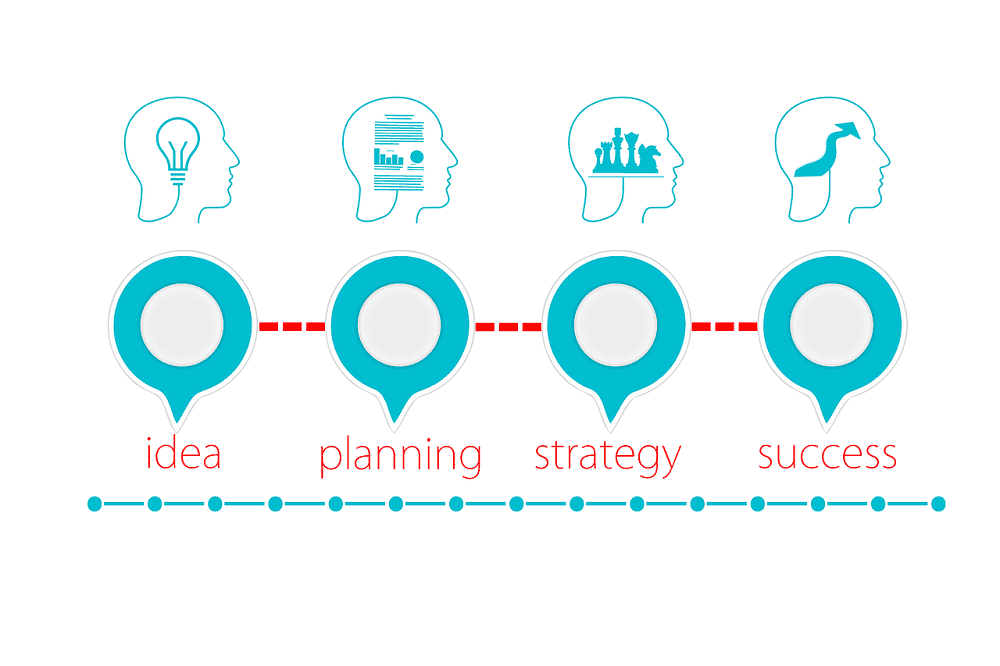For businesses of all scales, setting goals is one of the most crucial tasks. Business goals provide your company with a structured framework while laying down a clear mission and vision statement. Falling under the umbrella of your organization’s business plan, a clear set of goals allows the business to transition in the right direction and attain success! Before we transition to setting our business goals, let’s first understand why it is imperative to have business goals in the first place!
Why Are Business Goals Crucial?
Whether the goal is to acquire a competitor, establish standards to evaluate performance, pay competitive salaries or enhance existing services, it is a company’s business goals that drive commitment, action & the end result. Thanks to strong business objectives, brands can keep employees focused on growth, reinforce key elements of business, structure responsibilities, boost team collaboration, promote better costing, and hence, increase market share and achieve business success.
Clutch, a leading B2B rating platform has reported that more than 95% of SMBs fall short of meeting their targets due to absent or ambiguous business goals. Well-thought and documented business objectives not only create direction, delegate responsibilities, or motivate employees, but they also set the timeline, prepare the company for contingencies and ensure the healthy involvement of all the stakeholders. Now that we have understood the importance of setting effective business goals, let’s move ahead and explore how you can actually list them down and accomplish them.
1. Know & Prioritize The Key Areas:
Often businesses exhaust most of their resources finding new clients, keeping existing customers happy, streamlining marketing and sales pipelines, all at the same time while missing out on identifying their priorities. To set and accomplish business goals, we must first prioritize them as per the need of the business. SWOT analysis is a fantastic method to determine your company’s strengths, weaknesses, opportunities as well as threats.
Brands can undergo a SWOT analysis and determine what aspects of their business need to be addressed first! With effective analysis, companies can prioritize tasks like customer base expansion, increase revenue from existing clients or introduce a new marketing strategy to boost reputation. One should note that these are not goals but the primary areas where the business should be focusing on. Once you’ve identified primary areas warranting your attention, it is then you can move ahead with the goal setting.
2. Set SMART Goals:
Now that you’ve figured out the long-term, key areas you want the business to succeed in, it is time we set the SMART (Specific, Measurable, Action-based, Realistic & Time-specific) goals. It is advised to review the goals with your teams and get their feedback. You may also touch base with them on a regular basis and see what’s working and what’s not!
To perfectly capture everybody’s inputs, you can leverage a SMART Goals template to transform your goals into a pictorial reality for your teams, stakeholders to see and relate to. Presenters can easily lay down objectives, put an achievable value/figure to those, draft a timeline and set a deadline to keep endeavors on track, all with the help of a SMART Goals template. The more accurate or specific a company is with a certain goal, the higher the chance it’ll complete it.
3. Create a Timeline:
In any business setting, there is a lot of planning, scheduling, rescheduling & reassigning. A business objectives timeline is one of the best ways of keeping goals in sight, ensuring better time management, proper management of resources, eliminating communication gaps, setting realistic reminders & tracking KPIs (Key Performance Indicators). The timeline aids the pursuit of business goals since it promotes better prioritization of tasks and activities.
A study by Gartner suggests that project timelines are the best tool for managers to efficiently prioritize the essential duties, set short-term goals for the teams & keep the project on time and budget, respectively. Plus, it is easy to measure the performance of teams when you provide them with a reasonable timeline. An ideal business timeline showcases business tasks, efforts, meetings, all in chronological order while keeping the team members accountable.
4. Keep Up With Motivation:
Entrepreneurs and business owners will agree that motivation is a limited resource. Although you’ve set your business goals and created an achievable timeline for the same, ensuring motivation at all times, across your teams is a challenge. SMART goal setting is an effective way to outline the goals, depict the importance of the objective, and create a plan for achieving it.
According to a Harvard Business Review report, failure to meet business goals directly impacts the productivity of the employees and the organization as a whole. The path to progress often leads to routines and these can bring boredom and hence, loss of motivation. If that ever happens, one should not shy away from shaking things up, trying conventional ways of working, or altering the way you do things. If you’re able to break down long-term goals into daily or weekly actionable steps, the progress you make every day can help you build momentum and stay motivated throughout the timeline.
The End Line:
There is no denying that determining specific business goals is an overwhelming task. The above tips can help you break down mammoth tasks into bite-sized and doable pieces of work that take you one step closer to your goals, every day!
A healthy reminder- flourishing companies set goals that support the business’ mission and vision, build momentum, foster confidence, and reach the end destination while rewarding their people all the way for a job well done.

